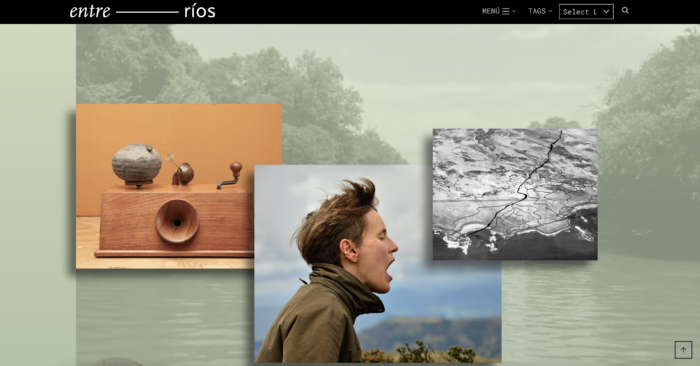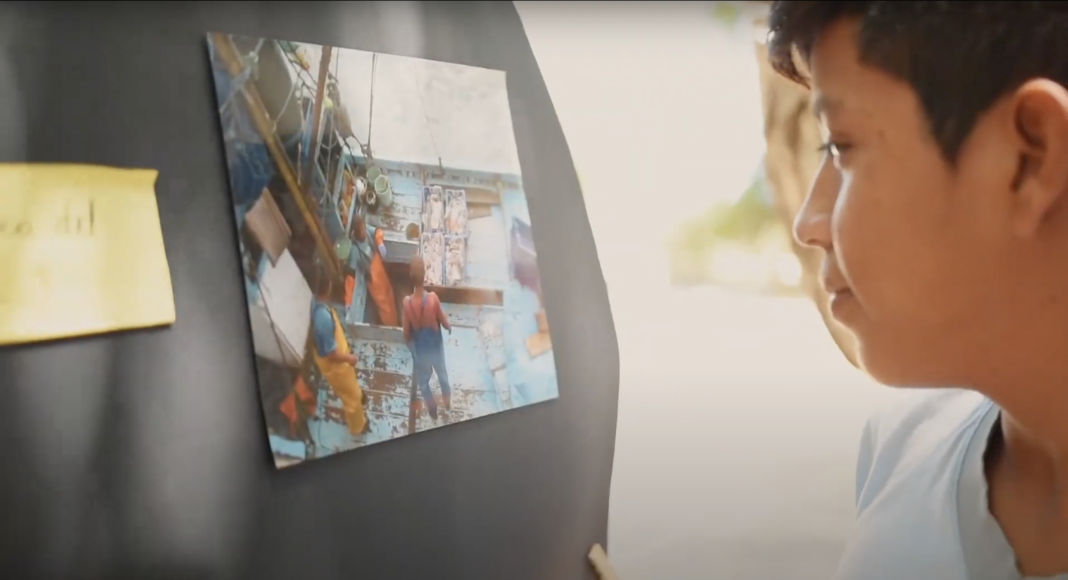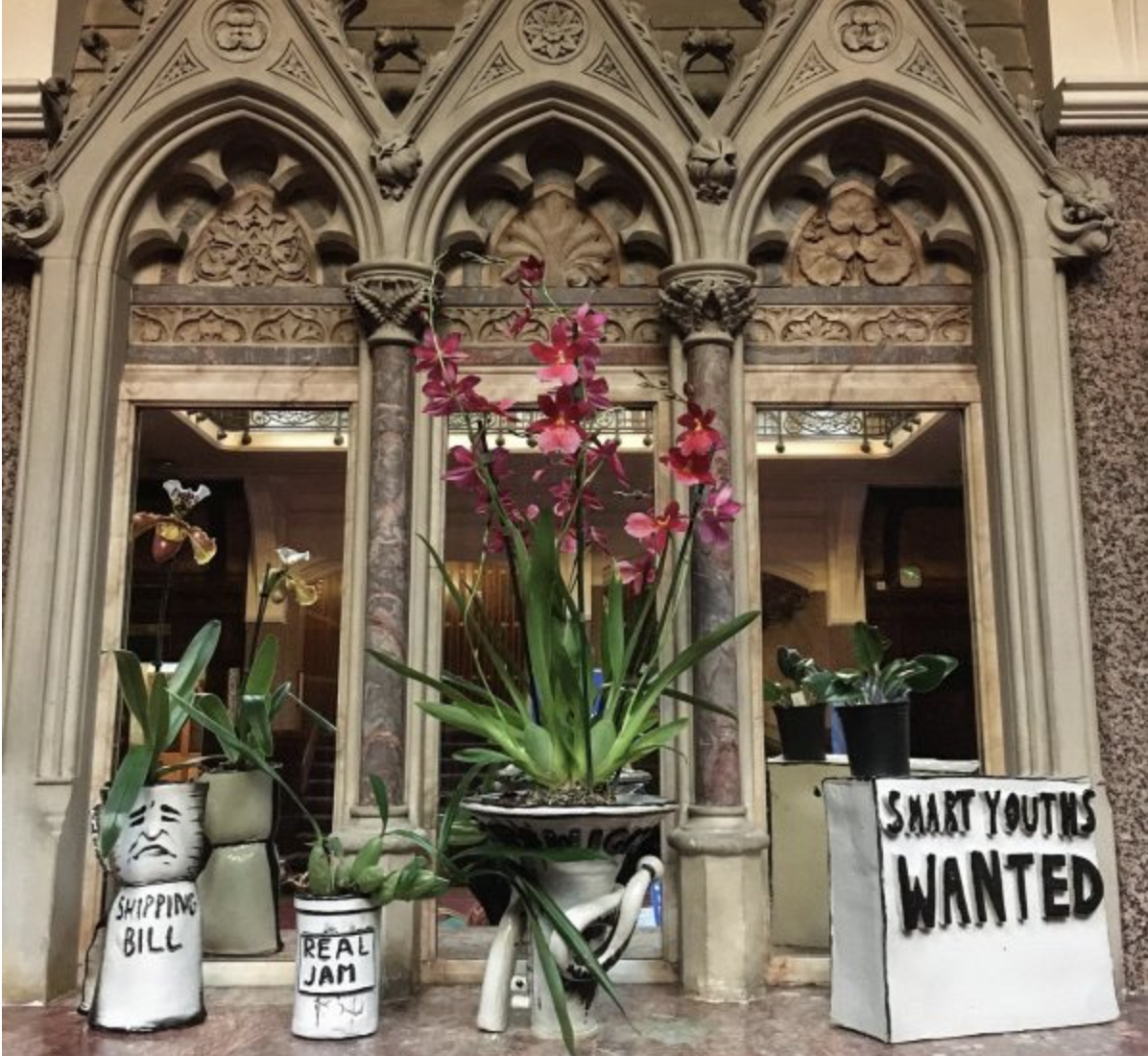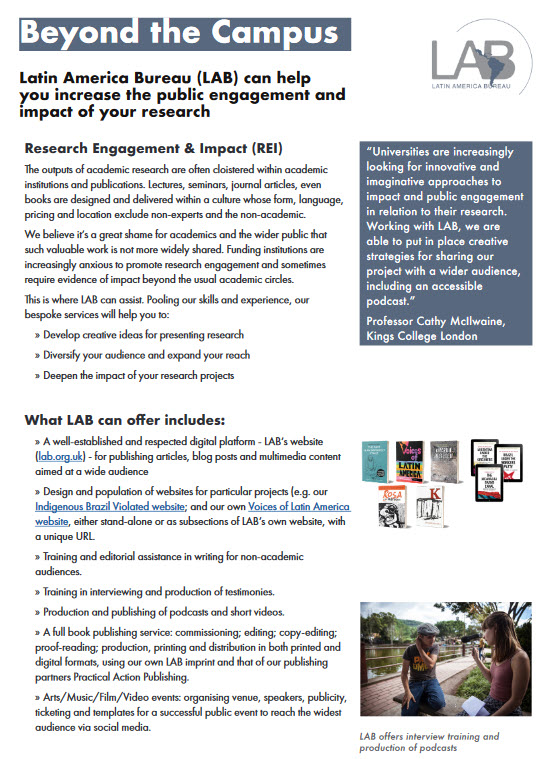LAB’s Rebecca Wilson attended an online workshop, part of the AHRC-funded research project Reimagining the Pacific, directed by Dr Paul Merchant. The project questions how creative responses to climate issues in Chile and Peru can help us to live well in changing coastal environments across the world.
Natural disasters have surged five-fold over the past 50 years as a consequence of aggravated climate change and extreme weather events, and poorer communities are without a doubt disproportionately impacted. Now is a critical time to put our heads together to reflect on new ways of enriching our understanding of these contemporary ecological challenges.
Dr Paul Merchant (University of Bristol) is the principal investigator on a research project which tackles this very issue. Titled ‘Reimagining the Pacific’, the project asks how visual and audiovisual creative responses to climate issues in Chile and Peru can help us to live well in changing coastal environments across the world.
As part of the project’s endeavour to enrich understanding, Paul organised a Creative Environments workshop, held online in September. Participants joined the discussion from Bristol, London, Birmingham, Newcastle, York, Manchester, Warwick, Iceland, San Diego, Israel and Peru.
The key question of the day was how creativity, imagination and play can help researchers both to carry out and communicate environmental research to the public. How, we asked, can collaborations between researchers and artists deepen our understanding of today’s ecological challenges?
Individual presentations looked at sound art, film, multimedia mapping (using music, recipes, testimony and mythology), festivals, interactive classroom resources, collaborative creation, language, a sense of place, illustration and play.
Creative collaboration
We heard from Matt Westbrook (University of Birmingham) and Camilo Botta (University of Warwick) about a research project raising awareness of orchid seed conservation through various art-science collaborations and exhibitions. Westbrook’s research used the life and work of Joseph Chamberlain to engage people in broader discussions on science, culture and heritage. Traces of this former Birmingham Mayor are clearly visible in the city to this day, but his penchant for wearing delicate flowers on his breast pocket destroyed Colombian orchid habitats.
Students at the University of Birmingham took part in the project, creating politically-engaged ceramics which tackled Chamberlain’s colonial legacy and looked at present-day issues stretching back over 120 years. ‘The ceramic room is a social art-making space’, Westbrook stressed. Their work was then displayed at Highbury, the Grade II listed building where Chamberlain lived in Birmingham; ‘Conservation needs stories’, Matt urged.
Mr Chamberlain’s Orchids. Students’ politically-engaged ceramics on display at Highbury. Image: Matt Westbrook
The project culminated in The Silent Orchid Festival and Summer School (2020), bringing together an international network of artists, scientists, historians and orchid enthusiasts who took part in weekly creative activities and discussions. There were touring orchid shows, an archive of photography, botanical illustrations, cross-disciplinary talks (for example on orchids and masculinity), and drop-in workshops which provided a space for conversation and debate between amateurs and experts.
‘Conservation needs stories’
Hadas Marcus, an independent animal ethics professor, holds that ‘Graphs only speak to scientists themselves,’ but that ‘in collaboration with science, visual culture can instil greater appreciation of nature while eliciting powerful responses, and hopefully instigate public awareness and action before it is too late’.
Marcus looked at whether visual culture can protect the Pacific, with a wealth of inspiring examples of ecological art: in films like Mariana Tschudi’s Pacificum (2019), in murals, photography, projection of ecological images onto urban spaces, installations created from plastics and pollutants like the WWF’s ‘Naturaleza Sin Plásticos’ campaign in Pamplona, holograms like Greenpeace’s ‘Chile Sin Plásticos’, and even underwater painting.
She also introduced the notion of ‘solastalgia’ – grief experienced due to distressing environmental change. For example, when communities are ravaged by mining projects or by the mega-construction of airports or motorways. This led us to ask ‘how can research collaborations give rise to a sense of agency in relation to the environment?’
‘How can research collaborations give rise to a sense of agency in relation to the environment’?
From his’ arts-based research in working-class coastal communities living with pollution, Clifton Evers concludes that ‘artists are themselves local researchers.’ He advocates involving participants as stakeholders themselves: ‘They should be shaping this research,’ he urges.
In order to understand a community’s feelings, for example towards the transition from high-carbon industries to low-carbon futures (and the abrupt arrival of new technologies), it’s crucial that local workers, industry leaders and government members have conversations about mutual benefit – not through interviews and focus groups, but through arts-based methods where participants can better communicate their hopes and concerns. Regional artists act as facilitators to the community, helping reshape and recreate identity. Participants can demand to know: Who benefits? What powers do the stakeholders have? Will jobs go to the community or outsiders? Can my kids grow up with a better future?
arts-based research projects have the power to pull isolated communities back together
In Emi Koch’s Coast 2 Coast youth-driven participatory storytelling movement, young people in small-scale fishing towns in Peru, Colombia, Mexico, Costa Rica and further afield, are seen as focal agents in promoting healthy environments in their coastal and fishing villages.
Through workshops, programmes and festivals — with an onus on play and imagination— students are encouraged to explore their ancient oceans and ancestral villages as researchers and communicators. They are encouraged to use multimedia tools to tell their own stories about the importance of sustainability within their community, and these stories are then shared with a wider network of youth in other coastal communities, in order to reflect and learn from each other. They use one key tool: play, because this stimulates the imagination. In the words of Albert Einstein, ‘Imagination is more important than knowledge’.
The importance of art for listening
Evers stressed that art is not just important as a tool for communicating research. It should be incorporated into the research process. Arts-based research itself should be an in situ mode of thinking and feeling, where people can use their bodies: going out into local environments to listen, notice how spaces have changed, see how different people experience it. Empathy arises from this kind of listening, he maintains. ‘It’s not about giving everyone a voice, but about the politics of listening.’
For Evers, vulnerability is crucial for change. His Blyth-based project enables local people to speak back to power and to the high-carbon industries. ‘There is agency in evaluating the government’s plans and saying, “Ok, you are offering us a future but we will critique this, speak amongst ourselves and communicate our hesitancy.’’’ Evers believes that arts-based research projects have the power to pull isolated communities back together.
The philosophy of the subject
Just as Evers speaks of listening to our environments, each of these arts-based research projects involves reshaping our perception to try and mimic that of the environment being researched. And, in line with it, we should adjust the language we use within the project.
For example, the entre—ríos project at the University of Essex explores the continuity between bodies of water, human bodies and land. Throughout the research process the participants recognised rivers as active subjects. The ethos of the project was conceptualised to reflect the movement of a river.

The participants chose the term ‘away from the keyboard’ to reflect distance from the online sphere, and avoided speaking of ‘in real life (IRL)’. They describe the website as a ‘confluence’ of projects that recognise rivers as active subjects which transform environments and shape memory. Their online exhibition and thoughtfully crafted website reflect Heraclitus’ saying, ‘you can’t step into the same river twice’ and research participants regularly took part in online workshops focusing on breathing and meditation, reflecting and taking on a river’s flow.
On the project website you can ‘dip a toe in’ at any point or follow particular streams within the menu, and it includes bodies of water in Peru, Mexico, Colombia and the UK, inviting reflection on our relationship to our ecology, and consideration of the intrinsic relationship between human health and the health of our rivers.
Xavier Velastín Vicencio’s sound art piece, [whalesong], about the noise in the oceans and the human stories deeply connected to it, states ‘Listening is playing with the voice of the environment and listening is saying something back’. One thing we can all take away is the importance, especially when working with the environment and with local communities, of listening.
Main image: Screenshot from “Festival Somos Mar” /// Audiovisual Arts for Healthy Seas & Fishing Communities from Coast 2 Coast.
LAB partners with UK universities and researchers on research projects (e.g. Women Resisting Violence, Indigenous Brazil Violated), providing different services to help communicate university research to the wider public and to increase its impact ‘beyond the campus’. This includes accessible book publishing; website design, hosting and maintenance; podcasting; video editing; social media and more.
If you’re interested in partnering with LAB, please get in touch.




